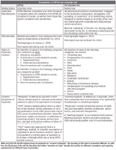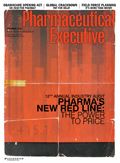Big Pharma's Newest Cost Center
As the burden of promotional disclosure expands beyond US shores, understanding the rules and then controlling the cost of compliance is a strategic necessity.
Compliance with new standards on disclosure of industry promotional ties to health providers is emerging as a global policy challenge—the United States is no longer an outlier. While pharmaceutical and device companies began tracking payments made to teaching hospitals and physicians on August 1, under the US Physician Payments Sunshine Act (Sunshine Act), a similar trend is underway in Europe. In June 2013, the European Federation of Pharmaceutical Industries and Associations (EFPIA) adopted a code requiring disclosure of certain payments from pharmaceutical companies to healthcare professionals and organizations (Disclosure Code). As pressure for transparency continues across the globe, the costs of compliance are slated to rise for each pharmaceutical and medical device company affected by these initiatives. This column suggests cost-mitigating strategies for companies designed to comply not only with the technical requirements of these global initiatives but also the spirit of the law.
Sunshine precedent
The Sunshine Act requires pharmaceutical and device manufacturers to report annually "any payment or transfer of value" made to physicians and teaching hospitals, who are collectively known as "covered recipients." The first reports are due to the Centers for Medicare and Medicaid Services (CMS) by March 31, 2014 for the tracking period of August 1 to December 31, 2013.

Comparison of EFPIA and Sunshine Act
US law mandates that all transfers of value be reported, unless an exception applies. Important exceptions include:
» Payments less than $10, except when the annual value of such payments to a covered recipient exceeds $100.
» Educational materials that directly benefit patients or are intended for patient use.
Penalties for failure to report in a timely, accurate manner, range from $1,000 to $100,000 per payment not reported, with a maximum penalty of $1,000,000 for each annual submission.
EFPIA's Disclosure Code
Europe has opted to take a self-regulating approach to promotional disclosures but the aims are similar to what is occurring in the United States. The region's major industry association has endorsed a strong Disclosure Code that requires the constituent members of the EFPIA Associations in Europe and corporate members of EFPIA to disclose annually any transfers of value to healthcare professionals (HCPs) and healthcare organizations (HCOs). The Disclosure Code will be imposed on member companies through the implementing codes that the EFPIA national member associations are required to adopt by December 31, 2013.
The scope of the disclosure obligations is very broad, and includes:
» Transfers to HCOs:
- Donations and grants
- Contributions to costs related to events
- Fees for services and consultancy
» Transfers to HCPs
- Contribution to costs related to events
- Fees for service and consultancy
Transfers of value must be disclosed and attributed on an individual basis for each recipient. Disclosures must be made within six months of the end of the relevant reporting period. The first reporting period will be 2015. The Disclosure Code allows companies to disclosure either on their website, or on a central platform, such as the one provided by the relevant government, regulatory body, professional authority, or member association. Unless expressly exempt by the Disclosure Code, transfers must be disclosed on an individual basis.
While the Disclosure Code does not provide for specific sanctions for noncompliance, it calls upon the national member associations to include sanctions for violations of their national codes.
Surging costs of compliance
While it is difficult to estimate precisely the total costs incurred by multi-national corporations operating both in the United States and Europe in complying with these transparency initiatives, it is undeniable that these costs have skyrocketed in recent years. CMS predicted that the average labor costs for an applicable manufacturer in complying with the Sunshine Act would be $159,234 in the first year and $119,426 in the second year. CMS estimated that large manufacturers would spend $50,000 in the first year and $5,000 in the second year for infrastructure costs, while small manufacturers would spend significantly less, $4,000 in the first year and $400 in the second year. The threshold size for "small" pharmaceutical manufacturers is 750 employees. Thus, for a pharmaceutical manufacturer, the US government estimated that the cost of implementation would be roughly $200,000 in the first year.
Industry contacts have scoffed at this low estimate, noting the vast resources needed not only for actual tracking but often for purchasing databases. Fellow consultants and company personnel responsible for marshaling a company's resources have noted figures well above $1 million to comply with this US law in the first year. Based on initial estimates from the industry, the EFPIA Disclosure Code compliance costs are expected to be in the same range.
There are also costs that are difficult to capture, including the loss of opportunity to collaborate with leading physicians or institutions who have instituted a no-industry payment policy, and the financial consequences for noncompliance as a result of enforcement actions. In Europe, new data protection regulations could also affect compliance costs around promotion.
Reducing cost of compliance
The increase in public scrutiny through both voluntary and legally mandated disclosures is designed by both organizations to bolster public confidence in the pharmaceutical industry. Here are a number of recommendations for reducing overall cost while not short-changing the legal obligations around compliance efforts:
» Designate personnel with compliance responsibility as early as possible and shop around for experienced outside firms.
- Tracking and reporting accurately is important not only because of the legal fines that can be imposed, but the risk of investigations by the US Department of Justice for Anti-Kickback allegations or potential False Claims Act suits that could arise after publication.
» Determine whether any exceptions apply.
- Does the 10 percent of annual revenues limit apply under the Sunshine Act?
- Can any of your separate divisions be considered exempt from US reporting obligations because it only manufactures non-covered products?
- Does the transfer of value relate to over-the-counter medicines, items of medical utility, meals and drinks, or medical samples which are excluded from EFPIA's Disclosure Code?
» Anticipate strategic growth areas and analyze whether transparency rules will apply to those business sectors. If so, plan compliance efforts early.
There are many additional legislative transparency mandates, spanning countries as diverse as France and Slovakia that companies must monitor. Countries in Asia, such as Japan, have their own transparency initiatives. Pressures and interest to do the same is growing in key emerging country markets like China. We believe this global trend of seeking transparency between manufacturers and providers will require sustained focus on managing these rising compliance costs, in much the same way that companies have tackled the cost burden in product registration and approvals.

Hae-Won Min Liao is Partner at Sidley Austin LLP. She can be reached at hminliao@sidley.com. Michele Tagliaferri is Counsel at Sidley Austin LLP. He can be reached at mtagliaferri@sidley.com.

Navigating Distrust: Pharma in the Age of Social Media
February 18th 2025Ian Baer, Founder and CEO of Sooth, discusses how the growing distrust in social media will impact industry marketing strategies and the relationships between pharmaceutical companies and the patients they aim to serve. He also explains dark social, how to combat misinformation, closing the trust gap, and more.
Is Artificial Intelligence a ‘Product’? Products Liability Implications for AI-Based Products
April 10th 2025As the physical products we use evolve to become increasingly complex, traditional products liability frameworks may not always fit to provide remedies for harm that can result from using novel product types.
FDA Approves Opdivo Plus Yervoy Regimen for MSI-H/dMMR Colorectal Cancer
April 9th 2025Approval of the Opdivo plus Yervoy combination regimen was based on results from the Phase III CheckMate-8HW trial, which was the largest immunotherapy study in patients with previously untreated, unresectable, or metastatic microsatellite instability-high or mismatch repair deficient colorectal cancer.